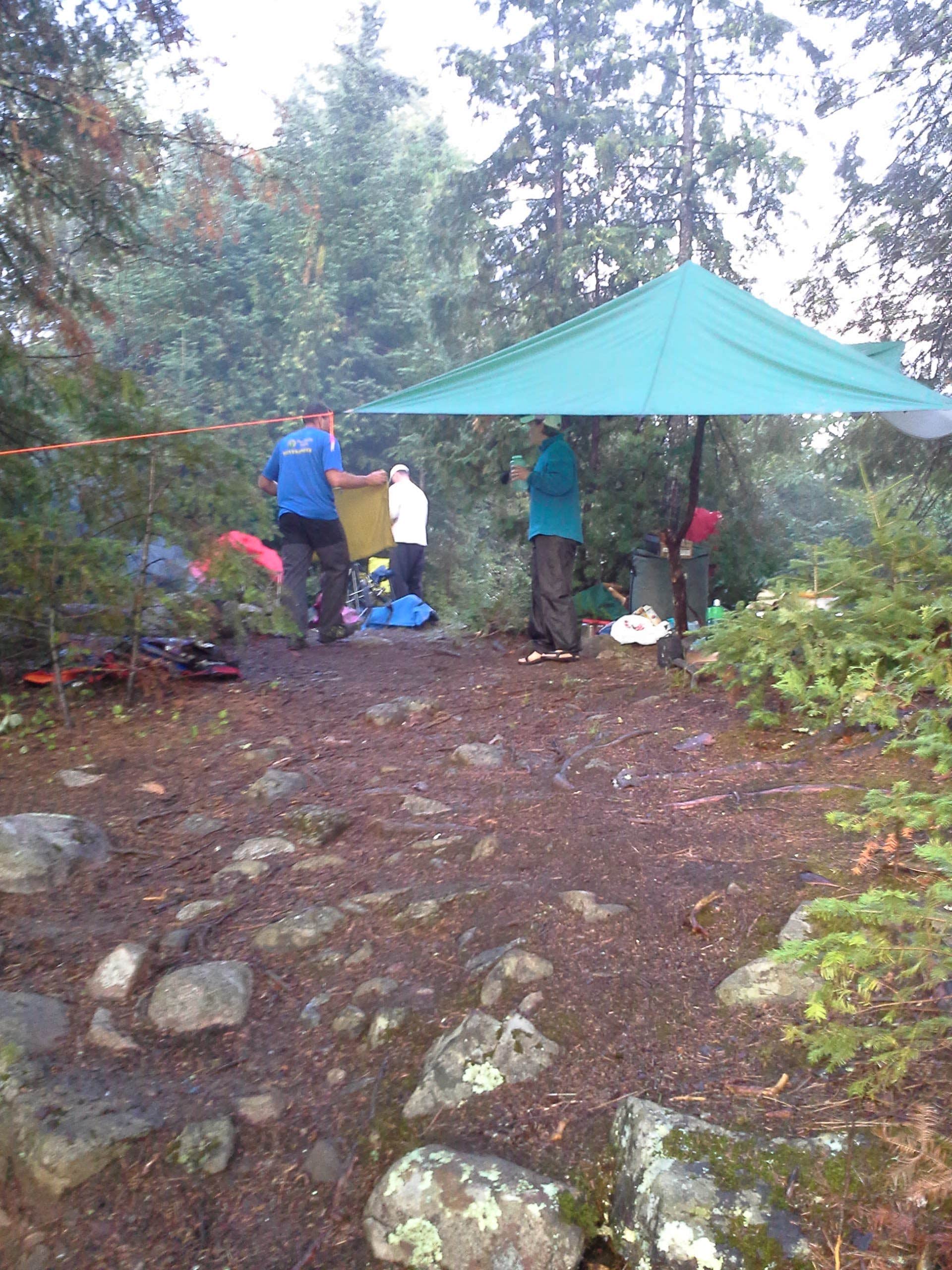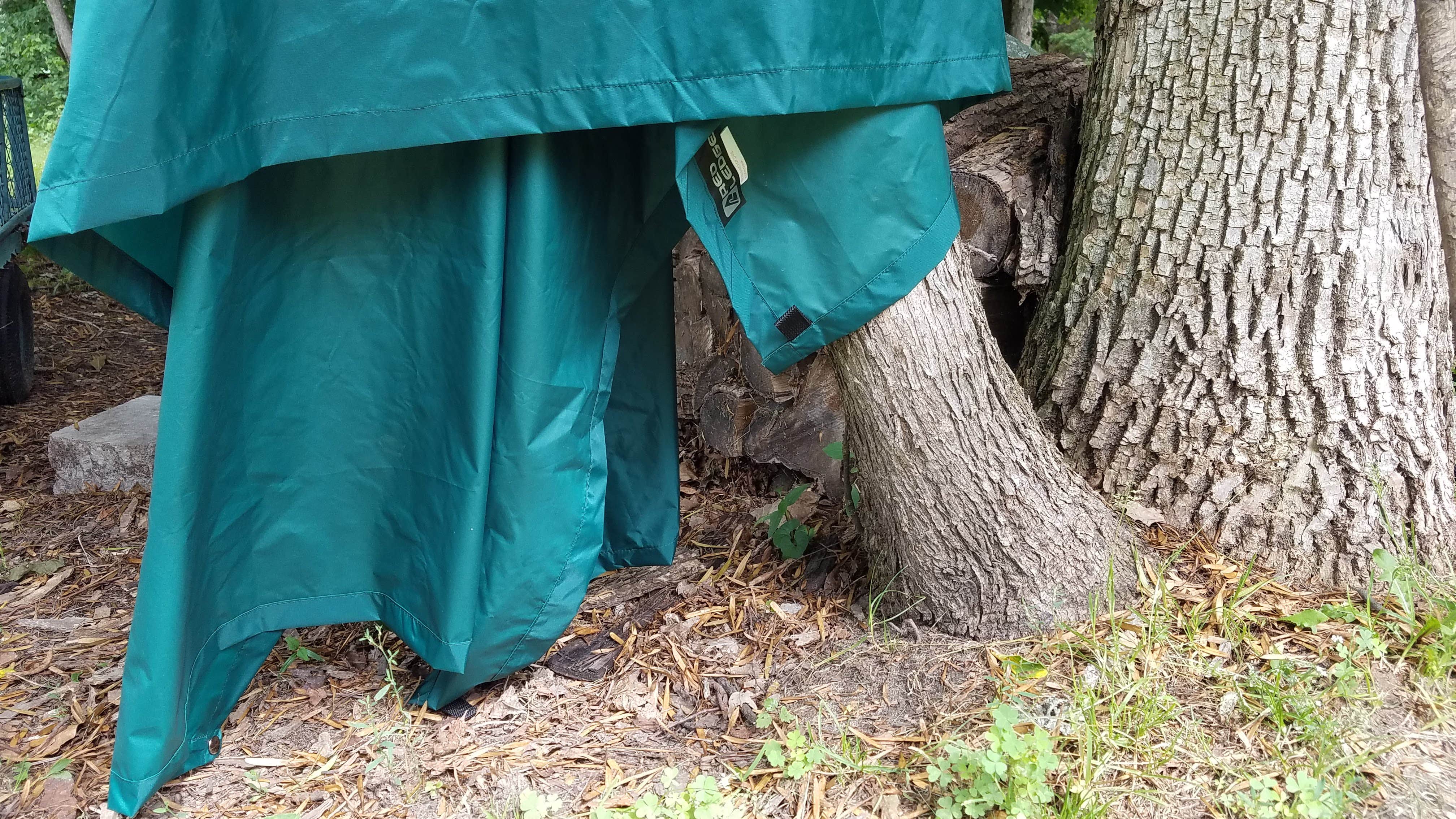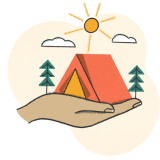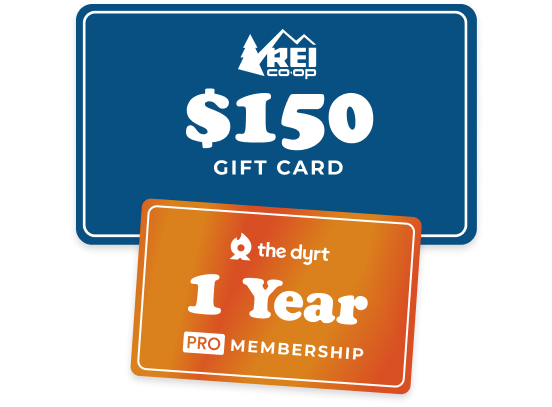In the middle of the wilderness, on a lake near Canada, is one of those campsites that you almost don't get to because of it's location, but curiosity gets the best of you and you try…and you succeed! To get there isn't necessarily a challenge, but it's in one of those campsites that's a bit off the beaten path. And so close to the Canadian Border that you aren't sure it's in the USA. But BWCA South Lake Camp 8 is on US Land, and well worth the trek. Especially since there's a portage to the next lake inside your campsite! And as luck would have it, the weather co-operated and it rained so I got the chance to test my new Red Ledge Storm Backpacker Poncho on my birthday!
CAMPSITE REVIEW:
**note: you will need to stay to the SOUTH shoreline in order to be in the BWCA (The United States). The north shoreline is in CANADA and to find a site there, you will need Canadian permits and Canadian fishing licenses as well as your passport**
The campsites in the Boundary Waters have strange names and numbers. They can either be located by the BWCA campsite number (in this case, this campsite is #2064) or by lake name and then campsite number on that particular lake (in this case, South Lake camp 8). Both are correct. We paddled in and portaged a few times to get to South Lake, and originally settled on another campsite because of location and other factors (to be read "kids didn't want to paddle any more"), but it wasn't a great site, and we wanted something better for our last 2 nights on the lake. So we went exploring and voila! Camp 8! In the BWCA, as long as you have a permit to enter (and you DO need a permit to enter), any campsite you find is yours for the length of your stay. No assigned sites.
If you've already made it to South Lake via either portage on the Western end, you might have already stopped at any other campsite, especially if it's peak season and you are afraid the others are already taken, but if you are a little more adventurous, and have a little more energy left (did you have your espresso on lunch break?), it's only a few more miles to the other end of the lake! Camp 8 is quite literally on the portage to Rat Lake. The portage doesn't go through the center of the campsite, but the campsite connects to the portage via a side trail that's about 20 feet long. You can hear the occasional noises of other canoe enthusiasts taking the portage, but if anyone has the energy and know-how to get there to begin with, then most likely they are kind and courteous and only want to get to point B and are simply passing through. The campsite isn't giant (you won't be putting up anything larger than a 6 person tent without a struggle), but we had a 6 person and a 4 person, and found space for both. The ground had a few lumps and bumps, but this is why we all have sleeping pads, yes?) There were some great hammock trees, but we had to get creative with placement since there were 7 of us. That said, the view was fantastic! Although it's not super easy to get up and down to the water, it's not hard. It's just a little steep. And yes, unless you decide to test the theory that you have "intestines of steel", you definitely want to filter ALL your water before you drink it or cook with it. The canoe landing wasn't great, but do-able. Even the kids weren't phased. You just need to have water shoes…you will be getting your feet wet. And as far as the bathroom is concerned…it does the job. I mean, you can do the job there, I mean…well…it works! All the toilets in the BWCA are pit style, but are away from the campsite (sometimes you have to do a bit of exploring down side paths to find them) but easily accessible. No doors or walls, just a view of the woods. Almost good enough to enjoy the view with your coffee in hand…almost.
Because you are so close to the Canadian border on this lake, and others in the area, there are international boundary markers on land. The ones on the US side were short metal stakes, cemented into rock. They were located along the shoreline, periodically, and not invasive at all. Just a side note to remind you where you were. I assume there was something similar on the Canadian side. There was a gorgeous silver cone on one of the portages that was, literally, ON THE LINE. It looked like a silver traffic cone cemented in the rock. It noted the US side as well as the CANADIAN side. Some portages had smaller markers with more details too.
PRODUCT REVIEW:
Occasionally, as a Ranger, I get the incredibly awesome task of reviewing kickin' gear in exchange for an honest review. That said, normally, there isn't a soul in the camping world that would wish for rain while enjoying the great outdoors in a house made of nylon, but on this trip, I needed rain. Why? Because I wanted to test out my [Adult Storm Backpacking Poncho by Red Ledge
Now, I own a backpacking poncho by another company already, but this one by Red Ledge had a few features that mine didn't, and I was intrigued. I love the idea of a "backpacking poncho" for a few reasons. Mostly because it covers me and the pack, so I don't have to worry about a separate pack cover and…bonus!…ventilation is better than a rain jacket and pants. The Adult Storm Backpacking Poncho comes in 2 colors: Classic Blue and Emerald.
There are a few features that are different than the one I already own that made it stand out:
- it has snaps on the sides to hold it together instead of seams
- the longer part of the back (made this way to cover your pack) can "snap up" to a length that mimics the hemline of the front so if you aren't wearing the pack, the back doesn't drag (I'm short…mine would drag)
- the snaps, rather than seams, allow it to be opened up into a rather large ground cloth that has straps at all four corners so you can pin it down
While I didn't actually use it as a tarp, I did open it up and lay it out to see what it would look like. Now, there will be a hole in the center because you have to have a head hole for, well, your head, if you are wearing it as a poncho. But if you were to use it as a ground cloth, you'd just fold the hood to cover the hole and you'd be fine. I did, however, get to use it in…drumroll…the rain! We had one heck of a downpour type of monsoon while we were there, and it was perfect timing to try it out! At first I thought I wasn't going to like the armholes being so large (simply snapped together instead of sewn), but it proved to be okay. I was able to pull my arms inside, if I wanted, rather easily to stay warm. I do think that you might end up a bit wetter because of the lack of seams on the sides if you were wearing it all day in blowing rain, but the payoff might be that you still have adequate coverage for your pack and you, as well as breathability and you can turn it into a tarp later, if you needed it. I'm short, so it was longer on me than most people, but I think that even on taller people, there would be ample coverage and the bonus is that there is tons more airflow than with rain pants and a jacket. The hood has an adjustable velcro tab on the back to shorten or lengthen it, but I just wore my ballcap underneath and it fit fine. There were also elastic bands on the hood to cinch it down with cord locks. Overall, a nice bang for the buck.
From the packaging:
Fully taped seams
Nylon taffeta
Waterproof poly coated with water repellant finish
If you happen to be on South Lake in the BWCA, check out Camp 8 with a view of Canadian islands from an American shoreline. But don't forget that Red Ledge Adult Storm Poncho, just in case Mother Nature decides that you need a shower…you know…because you probably do.










